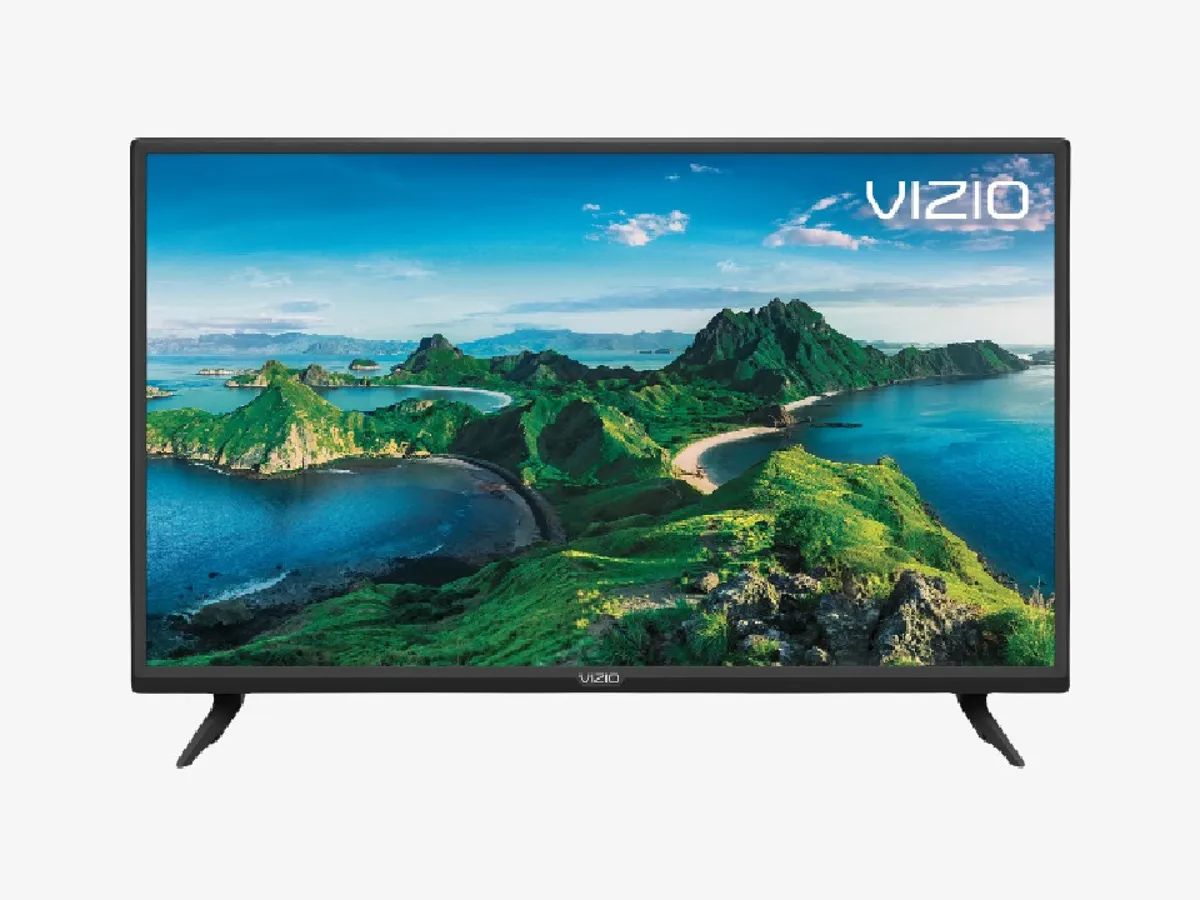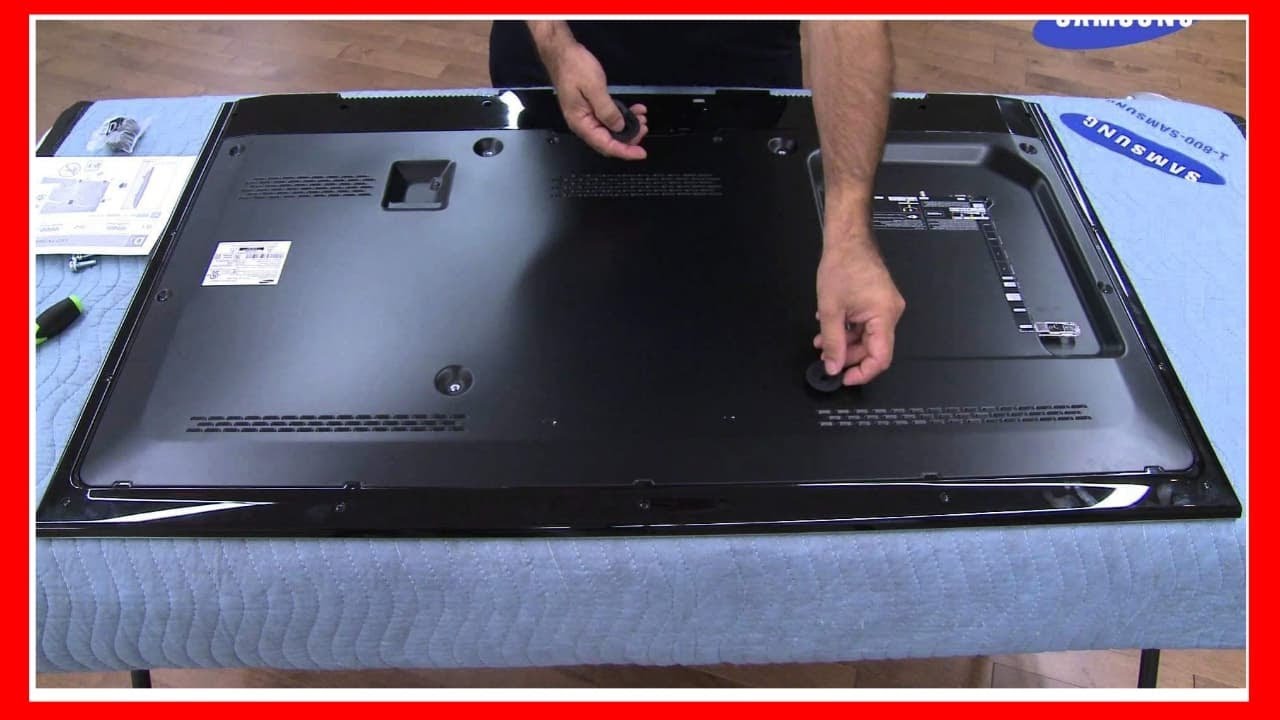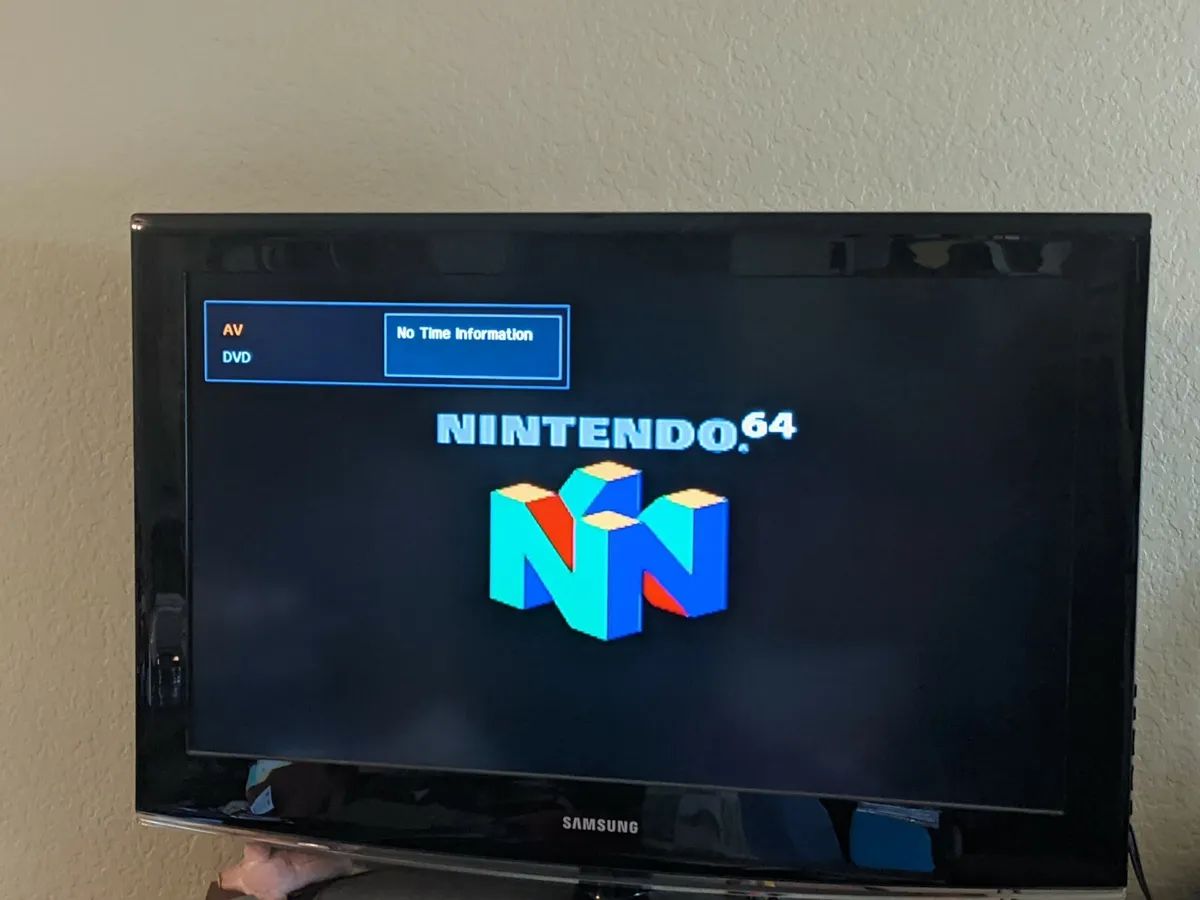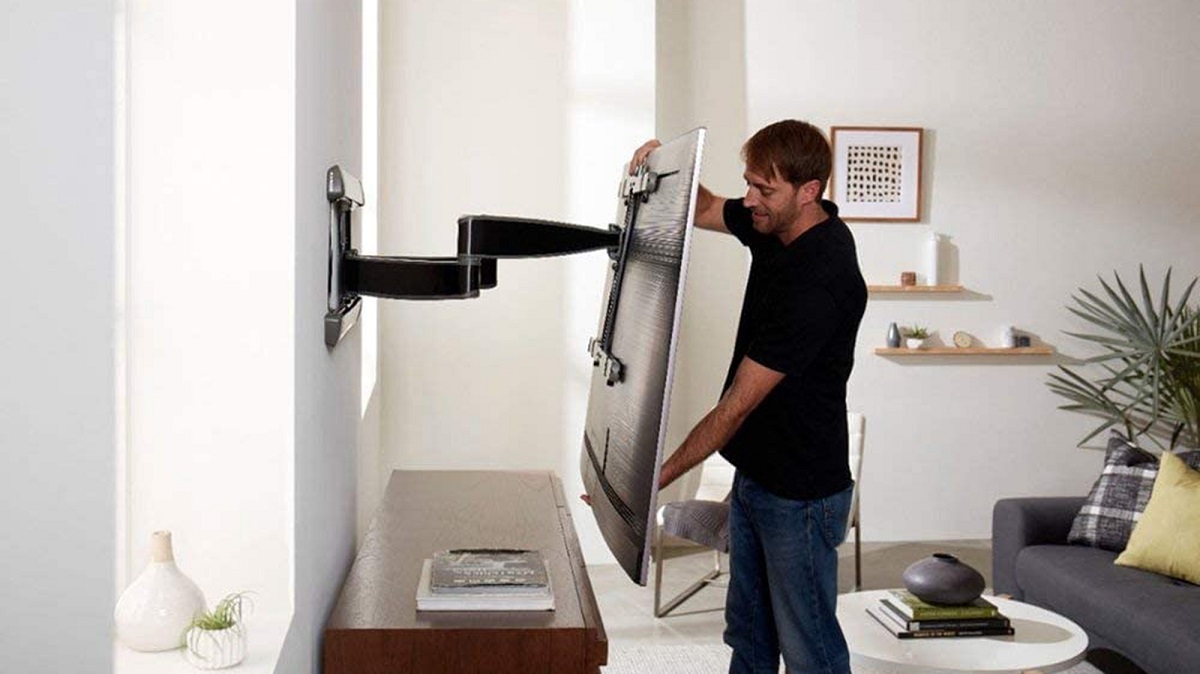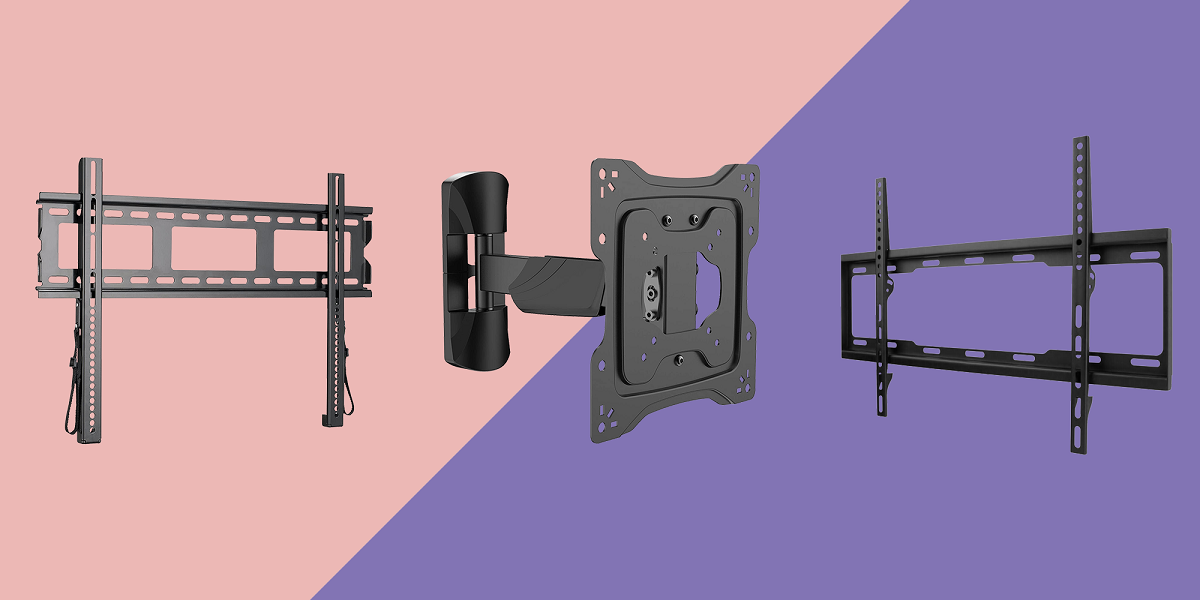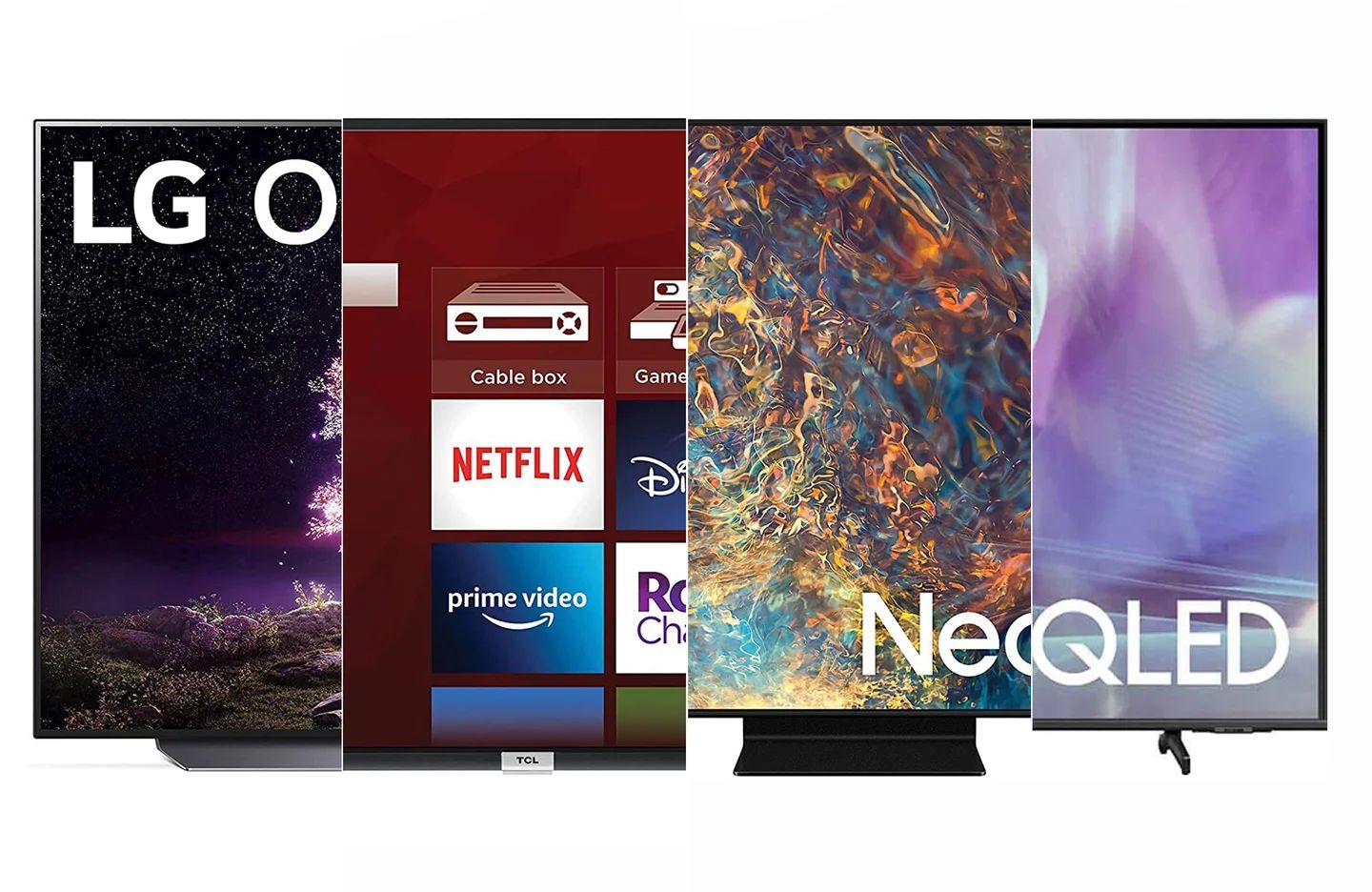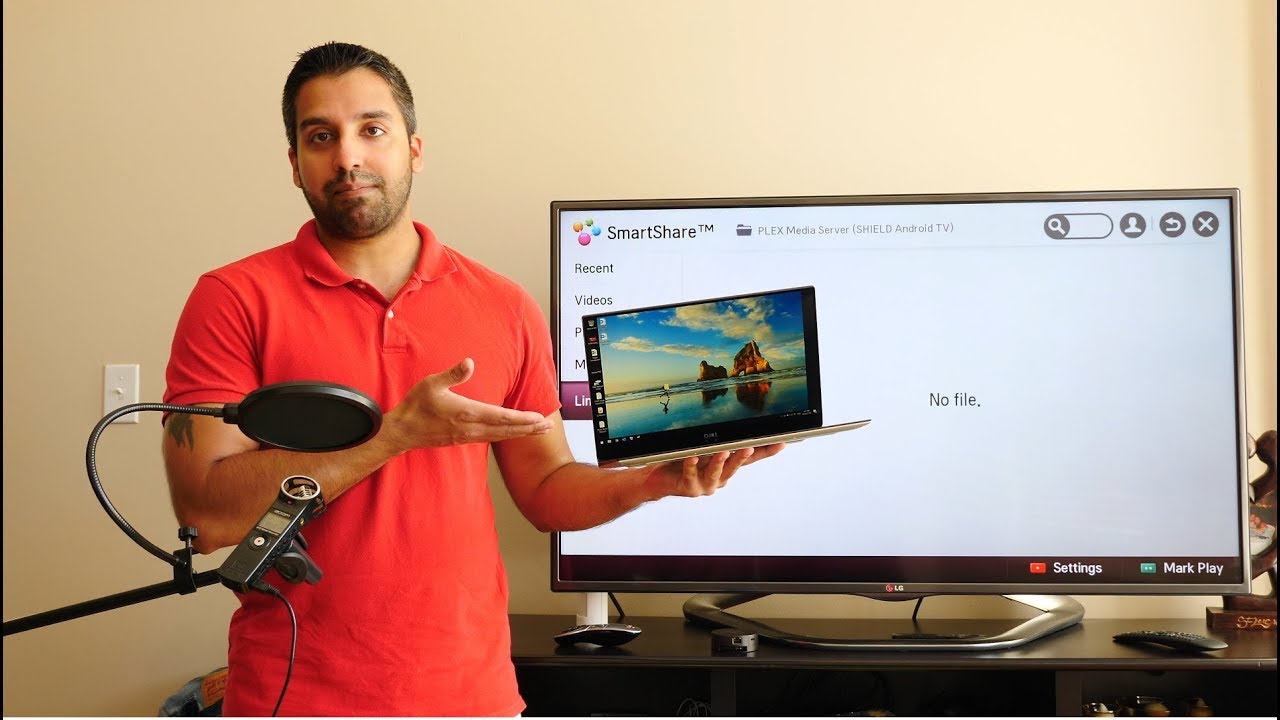Introduction
Connecting your computer to a Samsung LED TV can open up a whole new world of entertainment and productivity. Whether you want to stream your favorite shows and movies on the big screen or give a business presentation with enhanced visuals, hooking up your computer to your Samsung LED TV is a simple and effective solution.
By establishing a connection between your computer and TV, you can enjoy a larger display, better resolution, and improved audio quality. This setup is especially beneficial for gaming enthusiasts who want to experience their favorite games on a larger, more immersive screen.
In this guide, we will walk you through the process of connecting your computer to a Samsung LED TV. We will discuss the different types of cables and connections you can use, guide you on how to adjust display settings on your computer, and provide troubleshooting tips for common issues that may arise during the setup.
Before we dive into the details, it’s important to note that the specific steps for connecting your computer to a Samsung LED TV may vary depending on the model and type of TV you own. However, the basic principles and concepts we will cover in this guide apply to most computer and TV setups.
So, if you’re ready to enhance your viewing and computing experience, let’s get started with the necessary cables and connections required for this setup.
Subtitle 1: Required Cables and Connections
Before you can connect your computer to a Samsung LED TV, you’ll need to gather a few essential cables and make sure your TV has the necessary ports.
The most common cables used for this setup are HDMI, VGA, and DisplayPort cables. Let’s take a closer look at each of them:
- HDMI cable: HDMI stands for High-Definition Multimedia Interface, and it’s the preferred option for connecting modern computers to TVs. This cable carries both audio and video signals, providing a high-definition viewing experience. Most Samsung LED TVs have at least one HDMI port, but it’s always a good idea to check your TV’s specifications to ensure compatibility.
- VGA cable: VGA stands for Video Graphics Array, and it’s an older standard for connecting computers to displays. If your computer or TV doesn’t have HDMI ports, a VGA cable can be used as an alternative. However, VGA only carries video signals, so you’ll need a separate audio cable to transmit sound if necessary.
- DisplayPort cable: DisplayPort is a newer digital video and audio connection that offers high-resolution and excellent refresh rates. If your computer and TV support DisplayPort, using this cable can provide a superior viewing experience.
Aside from the cables, you’ll also need to ensure that your Samsung LED TV has the corresponding input ports. Most modern models have multiple HDMI ports, allowing you to connect various devices simultaneously. However, it’s essential to verify the available input ports on your TV to ensure compatibility with your computer’s output ports.
Once you have the necessary cables and confirmed that your TV has the required input ports, you’re ready to move on to the next step: connecting your computer to the TV. In the following sections, we’ll cover the specific steps for each type of cable connection.
Subtitle 2: Connecting the Computer to the TV using HDMI Cable
Connecting your computer to a Samsung LED TV using an HDMI cable is the most straightforward and popular method. HDMI cables carry both high-definition video and audio signals, eliminating the need for separate audio cables. Follow these steps to establish the HDMI connection:
- Start by locating the HDMI port on your computer and the corresponding HDMI input port on your Samsung LED TV. Most computers have an HDMI port on the side or back, while Samsung LED TVs typically have multiple HDMI input ports on the back or side panel.
- Once you’ve identified the ports, power off both your computer and TV.
- Connect one end of the HDMI cable to the HDMI output port on your computer. Ensure that the cable is securely inserted.
- Connect the other end of the HDMI cable to one of the HDMI input ports on your Samsung LED TV. Take note of the input port number, as you may need to select it later on your TV.
- Power on your TV and switch it to the appropriate HDMI input source. This can usually be done by pressing the “Input” or “Source” button on your TV remote. Use the TV’s menu or input selection feature to choose the HDMI input port you connected your computer to.
- Power on your computer, and it should automatically recognize the TV as a secondary display. However, if the TV display is not detected, you may need to adjust your computer’s display settings manually.
- To adjust the display settings, right-click on your computer’s desktop and select “Display Settings” or “Graphics Properties.” From there, you can choose the desired resolution, display mode, and other settings for the TV.
- Once the correct display settings are configured, you should now see your computer’s display on your Samsung LED TV.
With the HDMI connection successfully established, you can now enjoy your computer’s display, audio, and even use your TV as a second monitor if desired. Remember that some computers may require additional settings adjustments or specific software to optimize the dual-display experience. Consult your computer’s manual or support documentation for further guidance if needed.
Subtitle 3: Connecting the Computer to the TV using VGA Cable
If your computer or Samsung LED TV doesn’t have HDMI ports, you can still connect them using a VGA cable. VGA cables are commonly used for video connections and require a separate audio cable to transmit sound if necessary. Follow these steps to establish the VGA connection:
- Start by locating the VGA port on your computer and the corresponding VGA input port on your Samsung LED TV. The VGA port on your computer is usually labeled with “VGA” or “PC.” On your TV, the VGA input port is typically labeled “PC IN” or “VGA IN.”
- Once you’ve identified the ports, power off both your computer and TV.
- Connect one end of the VGA cable to the VGA output port on your computer. Ensure that the cable is securely inserted.
- Connect the other end of the VGA cable to the VGA input port on your Samsung LED TV.
- If you want to transmit audio as well, connect the audio cable from your computer’s audio output port (usually the headphone jack) to the audio input port on your TV.
- Power on your TV and switch it to the corresponding VGA input source. Again, use the TV’s menu or input selection feature to choose the VGA input port your computer is connected to.
- Power on your computer, and it should automatically recognize the TV as a secondary display. If not, you may need to manually adjust your computer’s display settings.
- To adjust the display settings, right-click on your computer’s desktop and select “Display Settings” or “Graphics Properties.” Set the resolution and display mode that is compatible with your TV.
- Once the appropriate display settings are configured, you should see your computer’s display on your Samsung LED TV.
It’s important to note that using a VGA connection may result in a slightly lower video quality compared to HDMI or other digital connections. Additionally, VGA only transmits video signals, so the separate audio cable is necessary if you want to transmit sound to your TV.
If your computer and TV support alternate audio output options, such as HDMI or digital audio cables, it may be worth considering those options for better audio quality and convenience.
Now that your computer is successfully connected to your Samsung LED TV using a VGA cable, you can enjoy an extended display or mirror your computer’s screen on a larger display for enhanced viewing and productivity.
Subtitle 4: Connecting the Computer to the TV using DisplayPort Cable
If both your computer and Samsung LED TV support DisplayPort connections, using a DisplayPort cable can provide you with a high-quality audio and video experience. DisplayPort cables are capable of transmitting high-resolution and high-refresh-rate signals. Follow these steps to establish the DisplayPort connection:
- Locate the DisplayPort output port on your computer and the DisplayPort input port on your Samsung LED TV. The DisplayPort port on your computer is usually labeled with “DisplayPort” or “DP.” On the TV, the DisplayPort input port is typically labeled “DP IN” or “DisplayPort IN.”
- Power off your computer and Samsung LED TV before making any connections.
- Connect one end of the DisplayPort cable to the DisplayPort output port on your computer. Ensure that the cable is securely inserted.
- Connect the other end of the DisplayPort cable to the DisplayPort input port on your Samsung LED TV.
- Power on your TV and switch it to the corresponding DisplayPort input source. Use your TV’s menu or input selection feature to choose the DisplayPort input port your computer is connected to.
- Power on your computer, and it should automatically detect the TV as a secondary display. If not, you may need to adjust your computer’s display settings manually.
- To adjust the display settings on your computer, right-click on the desktop and select “Display Settings” or “Graphics Properties.” From there, choose the appropriate resolution, display mode, and other settings for the TV.
- Once the correct display settings are configured, your computer’s display should appear on your Samsung LED TV.
DisplayPort cables offer several advantages, including higher video quality, support for higher resolutions and refresh rates, and the ability to transmit audio signals along with video. With a DisplayPort connection, you can enjoy a seamless viewing experience on your Samsung LED TV.
If your computer or TV has multiple DisplayPort ports, you can connect multiple displays or use your TV as an extended monitor for increased productivity. Be sure to adjust the display settings accordingly to optimize the multiple display setup.
With the DisplayPort connection established, you can now enjoy the benefits of a high-quality, high-performance connection between your computer and Samsung LED TV.
Subtitle 5: Adjusting Display Settings on the Computer
After connecting your computer to a Samsung LED TV, it’s essential to adjust the display settings to ensure optimal picture quality and compatibility. Follow these steps to make the necessary adjustments:
- Right-click on your computer’s desktop and select “Display Settings” or “Graphics Properties” from the context menu. This will open the display settings panel.
- In the display settings panel, you’ll find options to adjust the resolution, orientation, brightness, contrast, and other display-related settings.
- Start by selecting the correct resolution for your TV. It’s recommended to choose the native resolution of your TV to ensure the best image quality. You can usually find the native resolution information in your TV’s user manual or specifications.
- Depending on your computer’s graphics drivers and settings, you may also have the option to adjust the refresh rate, color profile, and other advanced settings. Experiment with these options to find the optimal visual experience.
- If you’re using your Samsung LED TV as a second monitor and want to extend your desktop, make sure the “Extend these displays” option is selected. This will allow you to move windows and applications between your computer’s screen and the TV.
- If you want to mirror your computer’s display on the TV, select the “Duplicate these displays” option.
- Consider adjusting the sound output settings as well. Depending on your computer’s settings, you may need to select the correct audio output device to ensure sound is transmitted through the TV’s speakers.
- Once you’ve made the necessary adjustments, click “Apply” or “OK” to save the changes. The display on your Samsung LED TV should now reflect the updated settings.
Remember, the specific display settings and options available may vary depending on your computer’s operating system, graphics drivers, and TV model. Consult your computer and TV’s user manuals or support documentation for more specific guidance.
By fine-tuning the display settings on your computer, you can ensure a visually pleasing and compatible connection between your computer and Samsung LED TV.
Subtitle 6: Troubleshooting Common Issues
While connecting your computer to a Samsung LED TV is generally straightforward, you may encounter some common issues along the way. Here are a few troubleshooting tips to help you address these problems:
- No signal: If your TV displays a “No signal” message, check that the cable connections are secure and properly inserted. Ensure that your TV is set to the correct input source and that your computer is powered on.
- Incorrect resolution: If the display on your TV appears blurry or stretched, it may indicate an issue with the resolution settings. Adjust the display settings on your computer to match the recommended resolution for your Samsung LED TV.
- No audio: If you’re not getting any sound through your TV’s speakers, ensure that the audio cable is connected correctly if you’re using VGA or DisplayPort connections. If you’re using HDMI, make sure that the correct audio output device is selected in your computer’s sound settings.
- Display flickering: If you notice flickering or flashing on the TV screen, try adjusting the refresh rate setting on your computer. Some TVs and computers may have compatibility issues at certain refresh rates.
- Unsupported resolution: If your TV displays an “Unsupported resolution” message, it means that the selected resolution on your computer is not supported by the TV. Try selecting a different resolution in your computer’s display settings that is compatible with your TV.
- Image doesn’t fit the screen: If the image on your TV is too large or small and doesn’t fit the screen properly, you may need to adjust the overscan or underscan settings on your TV or computer, if available. These settings allow you to resize the image to fit the screen correctly.
If you encounter any other issues that are not addressed here or if these troubleshooting tips don’t resolve the problem, consult the user manuals or support resources for your computer and Samsung LED TV. Additionally, reaching out to customer support for further assistance can help you resolve any persisting issues.
Remember, troubleshooting is a normal part of the setup process, and with a bit of patience and persistence, you can overcome any obstacles that may arise during the connection between your computer and Samsung LED TV.
Subtitle 7: Tips and Precautions for a Smooth Connection
To ensure a smooth and hassle-free connection between your computer and Samsung LED TV, here are some helpful tips and precautions to keep in mind:
- Check compatibility: Before connecting your computer to the TV, verify that your computer’s video output and the TV’s input ports are compatible. Refer to the user manuals or specifications for both devices to ensure compatibility.
- Use quality cables: Invest in high-quality cables to ensure a reliable connection and optimal signal quality. Poor-quality cables can lead to signal degradation and unstable connections.
- Power off both devices: Always power off your computer and Samsung LED TV before making any cable connections. This helps prevent any potential damage to the devices and ensures a safe connection process.
- Secure cable connections: Double-check that all cable connections are secure and properly inserted. Loose connections can result in a poor or nonexistent signal transmission.
- Update drivers and firmware: Keep your computer’s graphics drivers and the TV’s firmware updated to ensure compatibility and performance. Check the manufacturer’s website for the latest driver and firmware updates.
- Configure audio settings: If you’re using HDMI or DisplayPort for audio transmission, make sure your computer’s audio settings are correctly configured to enable sound through the TV’s speakers.
- Protect against power surges: Consider using surge protectors to safeguard your computer and TV against power surges. Power surges can potentially damage your devices, so it’s better to be safe than sorry.
- Optimize display settings: Adjust the display settings on your computer to match the capabilities of your Samsung LED TV for the best picture quality and performance.
- Properly power down: When you’re done using the TV as a secondary display, make sure to properly power down both your computer and the TV. This helps prevent any potential issues when disconnecting the devices.
By following these tips and taking necessary precautions, you can ensure a smooth and successful connection between your computer and Samsung LED TV. Enjoy the enhanced viewing experience and increased productivity that comes with this setup!
Conclusion
Connecting your computer to a Samsung LED TV allows you to enjoy a larger display, improved visuals, and enhanced audio for a variety of purposes, whether it’s streaming movies, gaming, or giving presentations. By following the steps outlined in this guide, you can establish a seamless connection between your computer and TV using HDMI, VGA, or DisplayPort cables.
Remember to gather the necessary cables and ensure compatibility between your computer’s video output and the TV’s input ports. Adjust the display settings on your computer and select the appropriate input source on your Samsung LED TV to optimize the viewing experience. Troubleshoot any common issues that may arise and take precautions to protect your devices and optimize performance.
Whether you’re using your Samsung LED TV as a second monitor or mirroring your computer’s display, this setup can greatly enhance your entertainment and productivity. Enjoy the benefits of a large-screen viewing experience, improved resolution, and immersive audio.
By following the tips and guidelines provided in this guide, you can confidently connect your computer to a Samsung LED TV and unlock a whole new world of possibilities. Explore, create, and enjoy the seamless integration of your computer and TV for an enhanced multimedia experience.









